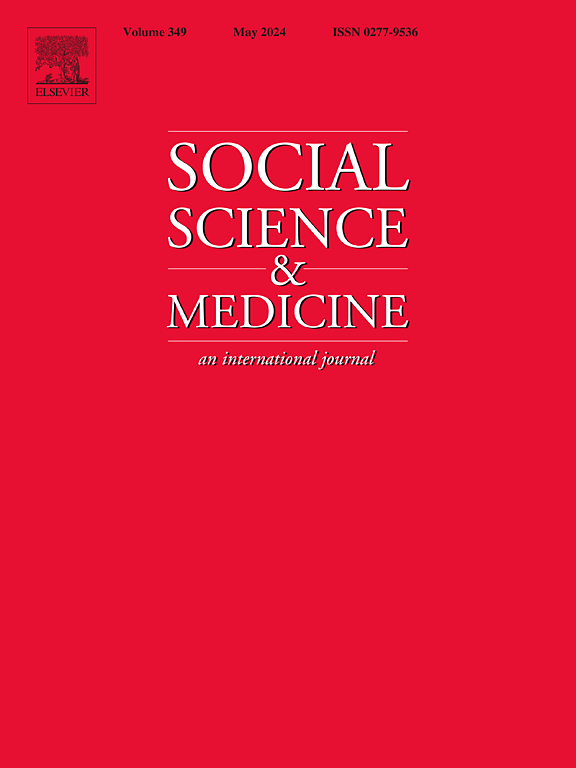Are geographic variations in secondary hospital expenditure caused by supply and demand factors? Evidence from migration in England
IF 4.9
2区 医学
Q1 PUBLIC, ENVIRONMENTAL & OCCUPATIONAL HEALTH
引用次数: 0
Abstract
Regional variations in hospital expenditure are a global concern because they may reflect unmet healthcare needs or inefficient resource use. Several recent studies have used internal migration to differentiate demand and supply causes of these regional variations. Most of these studies have focused on specific populations in competitive insurance settings and have not fully considered the timing of individual migrations. Using individual level data on 55 million patients from national Hospital Episode Statistics between 2010 and 2018, we examine geographical variations in overall hospital expenditure and in admissions (emergency and planned), outpatient visits and emergency department attendances. We estimate models similar to the need-based formula used by the English NHS to allocate resources to local commissioners, but we include individual fixed effects to capture demand factors. We find that 10–18 % of the regional variation in hospital expenditure stems from supply-side factors. This contribution is higher for ambulatory care (67.70 % for emergency department attendances and 56.89 % for specialist visits) than for hospital admissions, emergency (12.99 %) and planned (17.91 %). We also find that, after adjusting for need indicators, hospital expenditure is on average higher when individuals live in northern England and in regions with lower prices and higher than expected budget allocations. Despite this significant variation, the share attributable to supply in the English NHS is lower than other countries. Our results have implications for debates about regional variations in health care expenditure and for the importance and design of needs-based resource allocation.
二级医院支出的地域差异是否由供需因素引起?来自英格兰移民的证据
医院支出的区域差异是一个全球关注的问题,因为它们可能反映出医疗保健需求未得到满足或资源利用效率低下。最近的几项研究利用国内移徙来区分这些区域差异的需求和供应原因。这些研究大多集中在竞争激烈的保险环境中的特定人群,并没有充分考虑个人迁移的时间。利用2010年至2018年全国医院事件统计数据中5500万患者的个人数据,我们研究了医院总支出、入院(急诊和计划入院)、门诊就诊和急诊室就诊人数的地理差异。我们估计的模型类似于英国国家医疗服务体系(NHS)为地方专员分配资源所使用的基于需求的公式,但我们包括了个人固定效应来捕捉需求因素。我们发现,10 - 18%的医院支出区域差异源于供给侧因素。这一比例在门诊护理(急诊科就诊占67.70%,专科就诊占56.89%)中高于住院、急诊(12.99%)和计划就诊(17.91%)。我们还发现,在调整需求指标后,当个人生活在英格兰北部和价格较低且高于预期预算拨款的地区时,医院支出平均较高。尽管存在这种显著差异,但英国NHS中供应所占的份额低于其他国家。我们的研究结果对卫生保健支出的区域差异以及基于需求的资源分配的重要性和设计的争论具有启示意义。
本文章由计算机程序翻译,如有差异,请以英文原文为准。
求助全文
约1分钟内获得全文
求助全文
来源期刊

Social Science & Medicine
PUBLIC, ENVIRONMENTAL & OCCUPATIONAL HEALTH-
CiteScore
9.10
自引率
5.60%
发文量
762
审稿时长
38 days
期刊介绍:
Social Science & Medicine provides an international and interdisciplinary forum for the dissemination of social science research on health. We publish original research articles (both empirical and theoretical), reviews, position papers and commentaries on health issues, to inform current research, policy and practice in all areas of common interest to social scientists, health practitioners, and policy makers. The journal publishes material relevant to any aspect of health from a wide range of social science disciplines (anthropology, economics, epidemiology, geography, policy, psychology, and sociology), and material relevant to the social sciences from any of the professions concerned with physical and mental health, health care, clinical practice, and health policy and organization. We encourage material which is of general interest to an international readership.
 求助内容:
求助内容: 应助结果提醒方式:
应助结果提醒方式:


